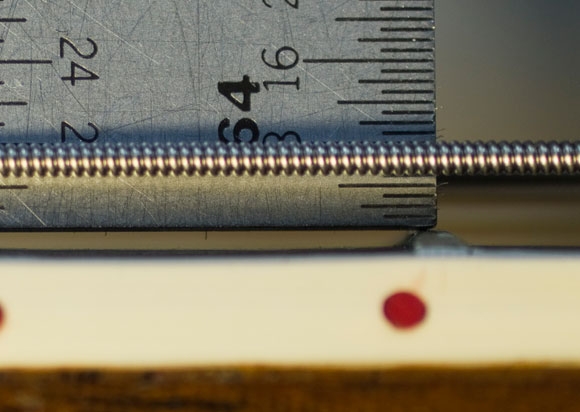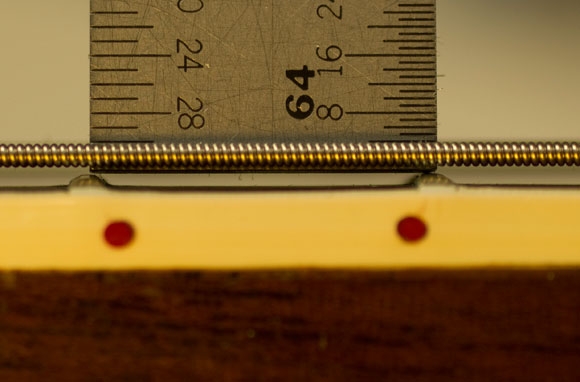One of the most necessary and useful tools is the six-inch ruler. Sometimes called a “machinist’s ruler”, these are made of metal and are graduated, or divided, in at least sixty-fourths of an inch (1/64″). Some models show hundredths of an inch or are metric; what matters is that the graduations are small, because what seems a small fraction to the eye can make a large difference to the hand.
This first image shows one of the basic action measurements – the distance from the top of the 12th fret to the bottom of a string. The measurement is 5/64 inches, a “normal” height for a bass string; on the treble side, the measurement will be 4/64ths inch. Treble strings require less clearance because the size of a string’s vibration is smaller as pitch increases.
The guitar in these photographs is a 1956 Gretsch Jet.
The next image demonstrates a measurement of the neck bow, or curvature under tension. The string is held down at the first and last frets (tip: use a capo), and the clearance between the string and the fret is measured. The smaller the clearance, the lighter the action; though as the neck straightens, rattles increase.


